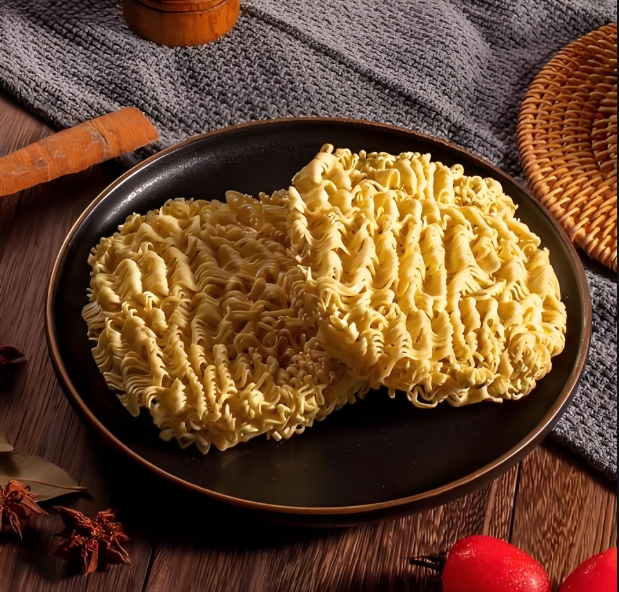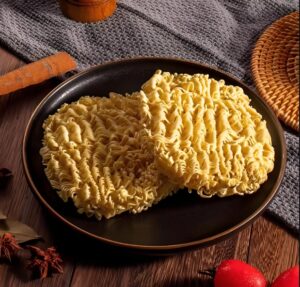<h1>How Small Fried Instant Noodles Are Formed: A Comprehensive Guide</h1>Introduction
Small fried instant noodles have become a staple in global markets, offering convenience and quick meals for busy consumers. This article explores the detailed manufacturing process, from raw ingredients to the final packaged product. Understanding this process is essential for B2B professionals in the food trade, including exporters, importers, and manufacturers seeking to optimize production and meet international standards.
instant noodle making machine
ToggleAs a popular export item, fried instant noodles require precision in forming to ensure quality, texture, and shelf stability. We’ll break down each step, highlighting key techniques and best practices for efficiency and safety.
The Raw Materials in Instant Noodle Production
High-quality raw materials form the foundation of small fried instant noodles. The primary ingredient is wheat flour, which provides the base structure and texture. Manufacturers often use durum or hard wheat flour for its gluten content, enabling the dough to hold shape during forming.
Other key components include water for hydration, salt for flavor and dough elasticity, and additives like kansui (an alkaline solution) to achieve the signature yellow color and chewy texture. Vegetable oils are also added early to prepare for the frying stage, ensuring even absorption later.
In B2B contexts, sourcing these materials from reliable suppliers is crucial. For instance, exporters might prioritize certified organic flour to meet demands in markets like Europe or North America, where health-conscious trends drive preferences.
The Mixing and Dough Preparation Process
Mixing begins with combining the dry ingredients in large industrial mixers. This step ensures even distribution of flour, salt, and additives, typically taking 10-15 minutes at controlled temperatures to prevent overheating.
Water is gradually added to form a dough, with the mixture kneaded until it reaches the right consistency. Advanced machinery uses vacuum mixing to remove air bubbles, resulting in a denser, more uniform dough that extrudes smoothly during forming.
For B2B operations, this phase often involves automated systems that reduce labor costs and improve consistency. Manufacturers exporting to regions with strict food safety regulations, such as the FDA in the US, must monitor pH levels and ingredient purity here.
Extrusion and Forming of the Noodles
Once the dough is prepared, it moves to the extrusion stage, where it’s forced through specialized dies under high pressure. These dies shape the dough into thin strands or desired forms, such as the small, curly shapes common in fried instant noodles.
The extrusion process is critical for achieving the perfect size and texture. For small fried varieties, dies are designed to produce noodles around 1-2 mm in thickness, ensuring quick cooking times. Temperature control during extrusion prevents the dough from sticking or breaking.
In international trade, B2B buyers often specify custom shapes or sizes for branding. For example, exporters might use multi-head extruders to produce varied noodle forms, catering to diverse markets like Asia, where thinner noodles are preferred, or Western regions favoring thicker strands.
Steaming for Pre-Cooking
After extrusion, the noodles undergo steaming to partially cook and gelatinize the starch. This step typically lasts 2-5 minutes in high-pressure steam tunnels, making the noodles soft and pliable for the next stages.
Steaming also helps in reducing moisture content slightly, which prepares the noodles for frying. Precise steam temperature—around 100-120°C—ensures even cooking without over-softening, which could lead to breakage during handling.
For B2B manufacturers, energy-efficient steam systems are a key selling point in foreign trade. Companies exporting to eco-conscious markets might highlight how this process minimizes waste and energy use, aligning with global sustainability goals.
The Frying Process for Texture and Preservation
Frying is where small fried instant noodles gain their characteristic crispiness and extended shelf life. Freshly steamed noodles are submerged in hot oil, usually palm or vegetable oil, at temperatures of 140-160°C for 1-2 minutes.
This rapid frying dehydrates the noodles, reducing moisture to below 5%, which inhibits bacterial growth and preserves the product. The oil also infuses flavor and creates the porous texture that allows quick rehydration when cooking at home.
In B2B scenarios, oil quality and frying time are heavily regulated for health reasons. Exporters must ensure compliance with standards like those from the Codex Alimentarius to avoid trans fats, making this step a focal point for quality assurance in global supply chains.
Drying and Dehydration Techniques
Post-frying, noodles enter drying chambers to further reduce moisture and stabilize the product. This involves hot air drying or continuous belt dryers, where temperatures range from 60-80°C for several minutes.
The dehydration process ensures the noodles remain crunchy until prepared, extending shelf life to 6-12 months. Monitoring humidity levels is vital to prevent over-drying, which could make the noodles brittle and unappealing.
B2B professionals often invest in advanced drying technologies for efficiency. For instance, in trade with moisture-sensitive markets, manufacturers might use dehumidified drying systems to maintain product integrity during long-distance shipping.
Seasoning and Packaging for Market Readiness
After drying, noodles are seasoned with flavor packets containing powders, oils, and spices. This step customizes the product for different regions, such as spicy variants for Asian markets or milder ones for Europe.
Packaging follows immediately to protect against contamination and moisture. Automated lines seal noodles in airtight bags or cups, often with nitrogen flushing to extend freshness. For small fried types, compact packaging ensures easy storage and transport.
In foreign trade, B2B packaging solutions are tailored for logistics. Exporters might use eco-friendly materials to appeal to buyers in sustainable markets, while ensuring compliance with import regulations like those from the EU’s REACH directive.
Quality Control and Standards in Manufacturing
Throughout the process, rigorous quality control measures safeguard product safety and consistency. This includes testing for microbial contamination, nutritional content, and physical defects at multiple stages.
Laboratories use tools like spectrophotometers to verify color and texture, while sensory panels assess taste and aroma. Adhering to international standards, such as ISO 22000 for food safety, is non-negotiable for B2B exporters.
For professionals in the trade, implementing traceability systems is key. This allows quick recalls if issues arise, building trust with global partners and enhancing market competitiveness in the instant noodle industry.
Frequently Asked Questions
Below, we address common inquiries about the formation of small fried instant noodles, providing insights for B2B stakeholders.
What are the main challenges in extruding small fried instant noodles?
Extrusion can be challenging due to dough consistency; improper mixing may cause blockages. Manufacturers overcome this with high-precision machinery and regular maintenance to ensure smooth operations and reduce downtime in production lines.
How does frying affect the nutritional value of instant noodles?
Frying reduces moisture but can increase fat content, potentially lowering nutritional density. B2B producers mitigate this by using healthier oils and offering low-fat variants, appealing to health-focused importers.
What role does automation play in modern noodle forming?
Automation streamlines processes like mixing and packaging, cutting costs and errors. For exporters, it enables scalable production to meet large orders, making it a critical investment for competitive global trade.
How can manufacturers ensure compliance with international export standards?
By conducting regular audits and using certified suppliers, manufacturers maintain compliance. This includes HACCP protocols to track potential hazards, essential for seamless exports to regions with strict regulations.
What innovations are emerging in instant noodle forming?
Innovations like 3D printing for custom shapes and AI-driven quality checks are transforming the industry. B2B companies adopting these can differentiate their products in crowded markets, boosting export potential.
Conclusion
In summary, the formation of small fried instant noodles involves a precise sequence of steps, from raw material selection to final packaging, each optimized for quality and efficiency. This process not only ensures a tasty, convenient product but also supports B2B opportunities in foreign trade by meeting global standards and consumer demands. By understanding these intricacies, professionals can enhance their operations, foster innovation, and drive success in the competitive instant noodle market.









